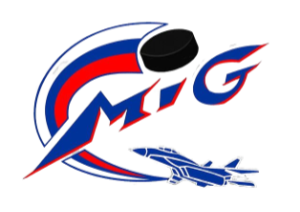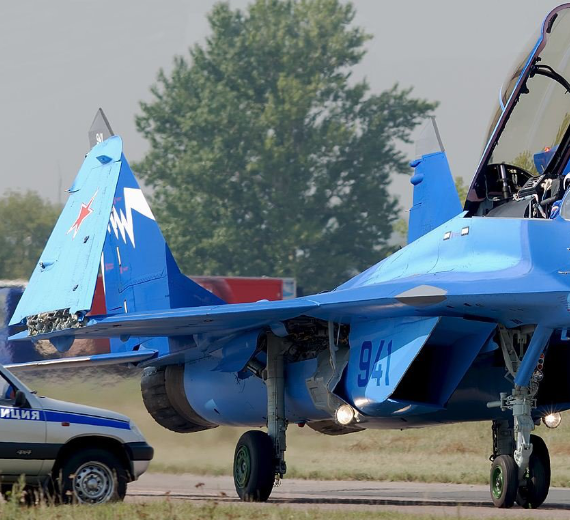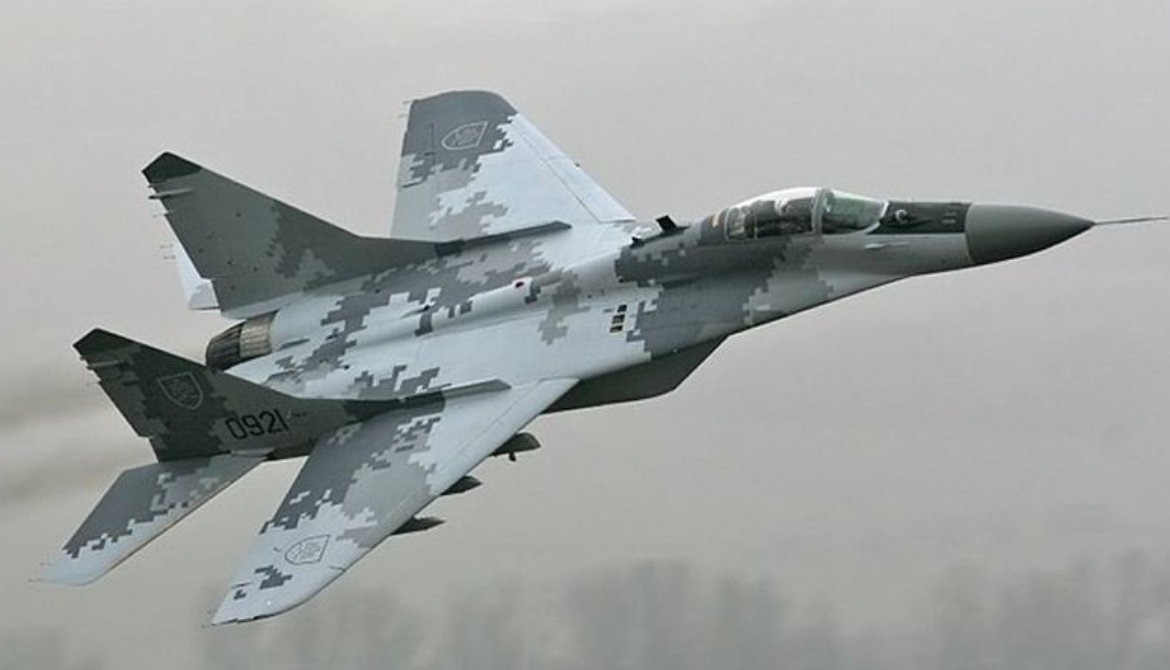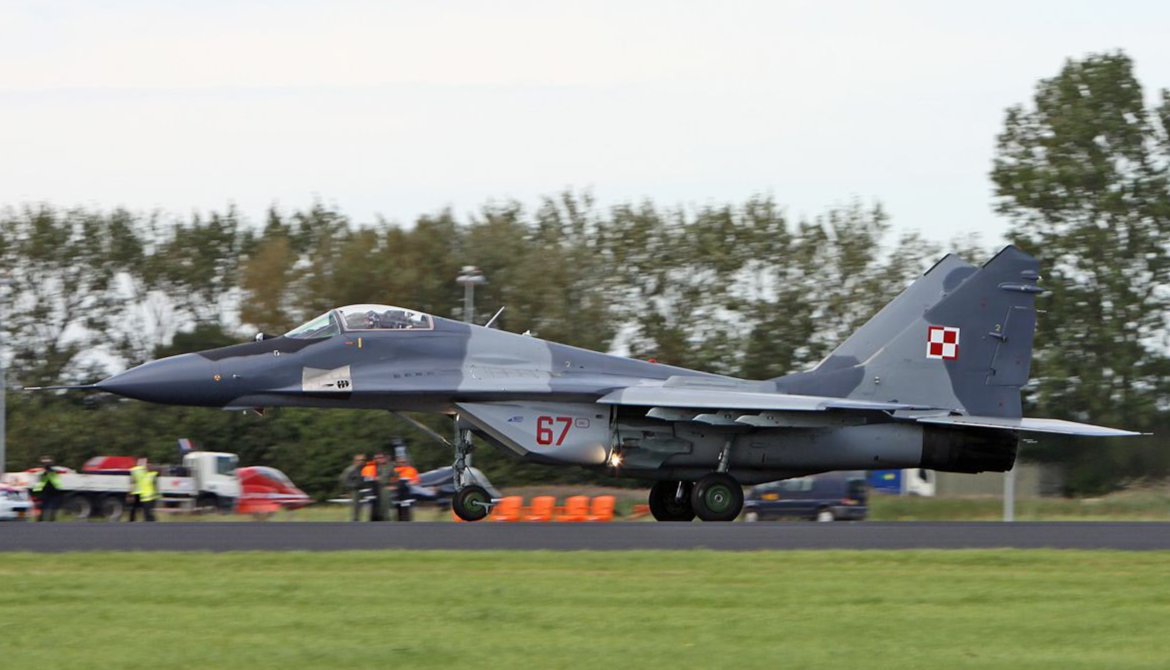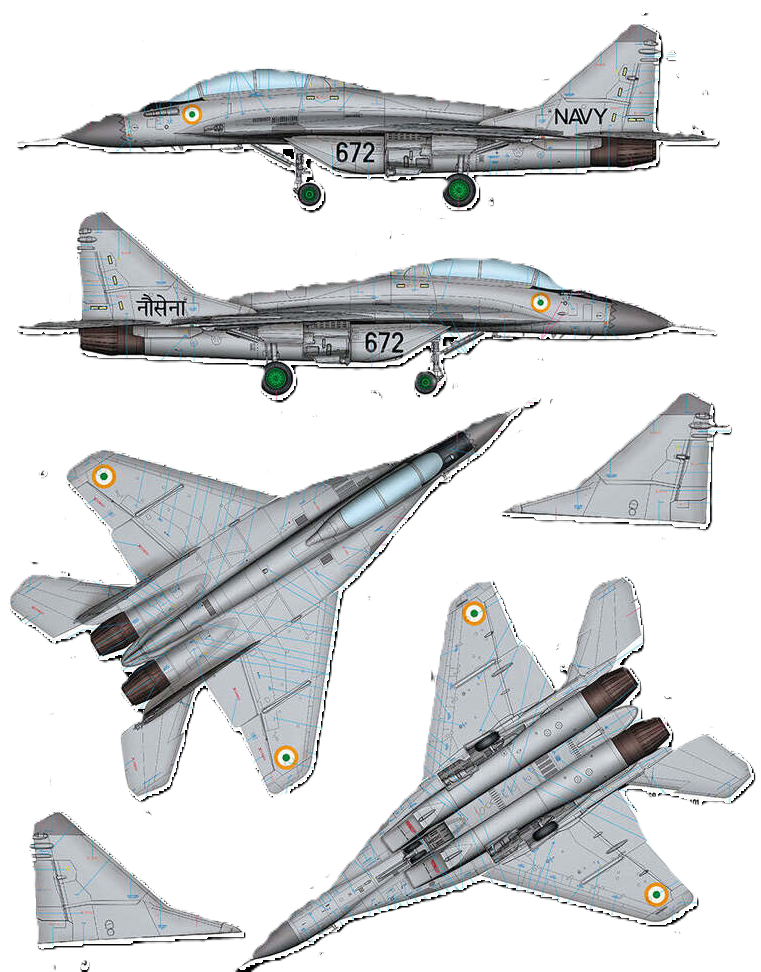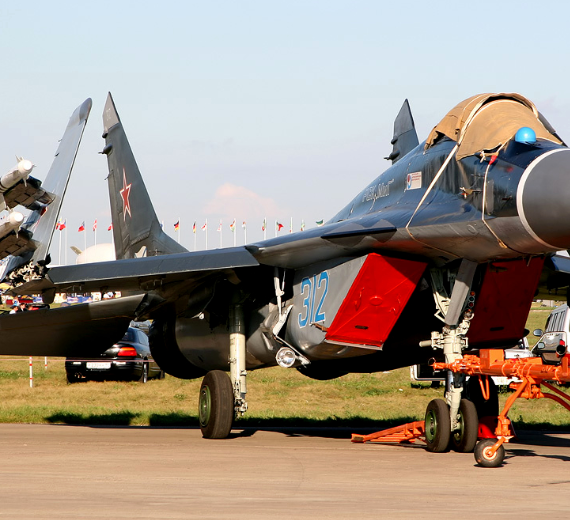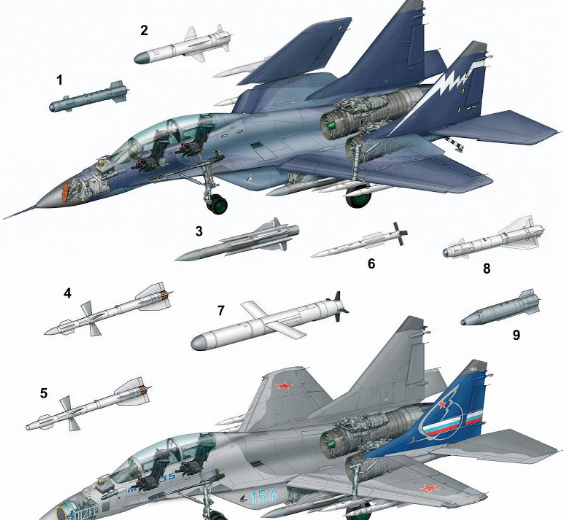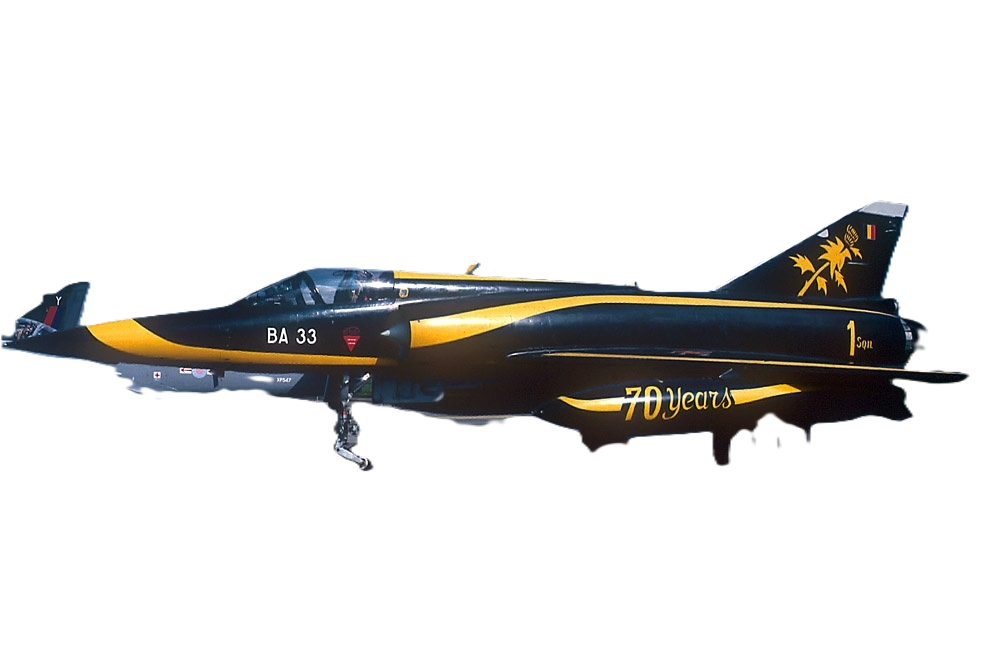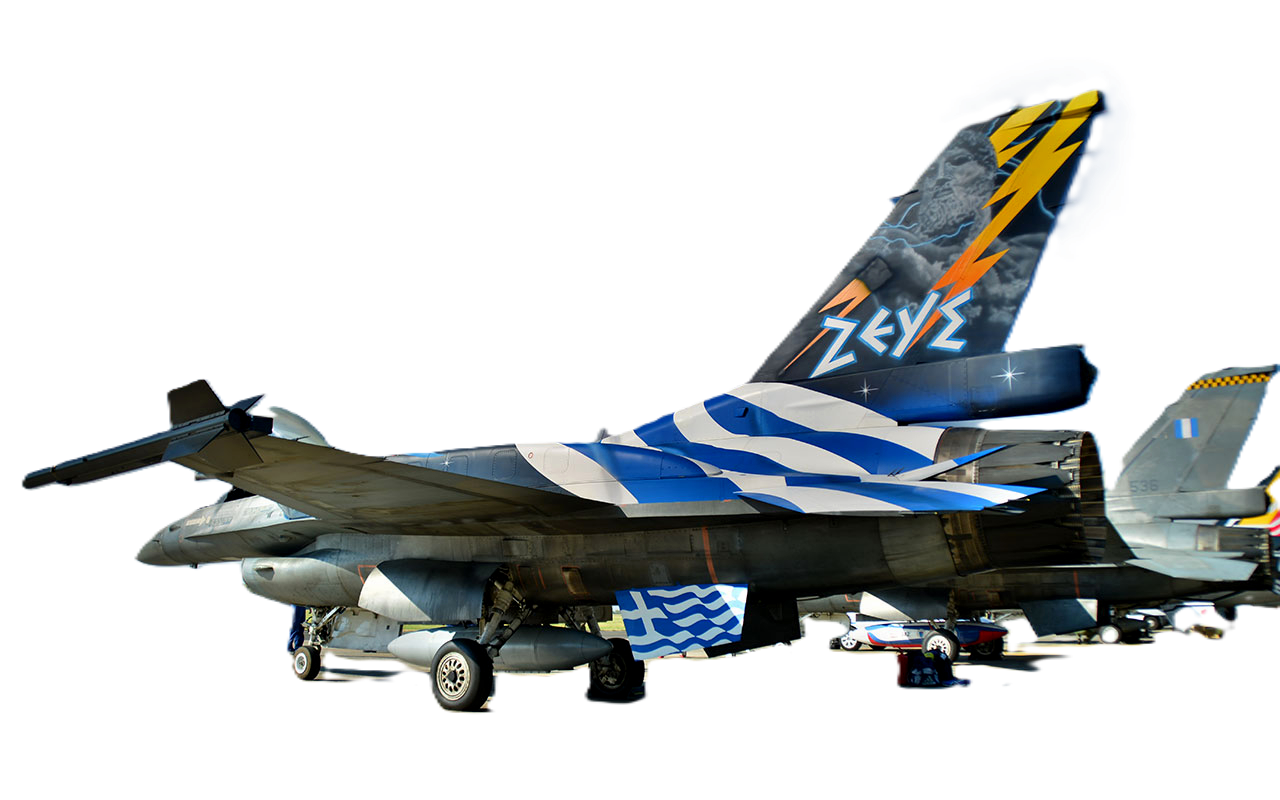Russian Aircraft "Mig"
MiG-29K Fulcrum-D
|
|||||||||||||||||||||||||||
|
|
.
History Russian Aircraft Corporation "Mig"
Mikoyan MiG-29K NATO reporting name: Fulcrum-D
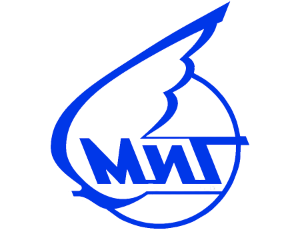
The Mikoyan MiG-29K (Russian: Микоян МиГ-29K; NATO reporting name: Fulcrum-D) is a Russian all-weather carrier-based multirole fighter aircraft developed by the Mikoyan Design Bureau. The MiG-29K was developed in the late 1980s from the MiG-29M. Mikoyan describes it as a 4+ generation aircraft. Production standard MiG-29Ks differ from prototypes in features such as a multi-function radar and several new cockpit displays; the adoption of HOTAS (hands-on-throttle-and-stick) controls; the integration of RVV-AE (also known as R-77) air-to-air missiles, along with missiles for anti-ship and anti-radar operations; and several ground/strike precision-guided weapons.
Design

The MiG-29K is drastically modified from the Mikoyan MiG-29M for naval operations. The airframe and undercarriage are reinforced to withstand the stress experienced upon landing. Folding wings, an arrestor hook, and catapult attachments were added for carrier operations; the aircraft's undercarriage track was also widened. The MiG-29K, unlike the early MiG-29, can both conduct aerial refueling and "buddy" refuel other aircraft.

The MiG-29K has two widely spaced RD-33MKs. The early prototypes were fitted with two RD-33K turbofan engines, each with afterburner thrust of 86.3 kN (19,800 lb) and a possible take-off thrust of 92.2 kN (20,723 lbf) for shipborne operations. The RD-33MK engine features 7% higher power over the base RD-33, enabled by the usage of improved materials for the turbine blades.
0
KmCeiling
0
KmCombat RANGE
0
MachAircraft Speed
0
Max Crew
Photo Gallery
Russian Aircraft Corporation "Mig"
Mikoyan MiG-29K NATO reporting name: Fulcrum-D


Russian Aircraft Corporation "Mig"
Mikoyan MiG-29K NATO reporting name: Fulcrum-D
General Info
-
-
-
-
- Crew: 1
- Length: 17.32 m (56 ft 10 in)
- Wingspan: 11.36 m (37 ft 3 in)
- Height: 4.4 m
- Wing area: 38 m2 (410 sq ft)
-
-
-
Powerplant
-
-
-
-
- Empty weight: 11,000 kg
- Gross weight: 14,900 kg
- Max takeoff weight: 18,000 kg
- Fuel capacity: 3,500 kg internal
- Powerplant: 2 × Klimov RD-33 afterburning turbofan engines, 49.42 kN (11,110 lbf) thrust each dry, 81.58 kN (18,340 lbf) with afterburner
-
-
-
Performance
-
- Maximum speed: 2,200 km/h (1,400 mph, 1,200 kn) / Mach 2+ at high altitude
-
-
-
- 1,400 km/h (870 mph; 760 kn) / Mach 1.13 at low altitude
-
-
- Cruise speed: 1,500 km/h (930 mph, 810 kn) / M1.21
- Range: 2,000 km (1,200 mi, 1,100 nmi) at high altitude
-
-
-
- 700 km at low altitude
-
-
- Combat range: 850 km
-
-
- Service ceiling: 17,500 m (57,400 ft)
- g limits: +8
Armament
- Guns: 1 × 30 mm Gryazev-Shipunov GSh-30-1 autocannon.
- Hardpoints: 7 × hardpoints (6 × underwing, 1 × fuselage) with a capacity of up to 4,500 kg of stores
.
Links to Youtube & Others
Armament for the MiG-29 includes a single GSh-30-1 30 mm (1.18 in) cannon in the port wing root. This originally had a 150-round magazine, which was reduced to 100 rounds in later variants, which only allows a few seconds of firing before running out of ammo. Original production MiG-29 aircraft cannot fire the cannon when carrying a centerline fuel tank as it blocks the shell ejection port. This was corrected in the MiG-29S and later versions.
Russian Aircraft Mig
MiG-29 Fulcrum
The cockpit features a conventional centre stick and left hand throttle controls. The pilot sits in a Zvezda K-36DM ejection seat.
Youtube Link
The baseline MiG-29 9.12 has a Phazotron RLPK-29 radar fire control system which includes the N019 Sapfir 29 look-down/shoot-down coherent pulse-Doppler radar and the Ts100.02-02 digital computer.
